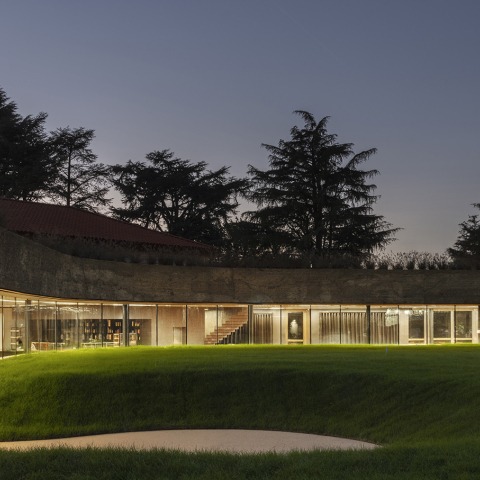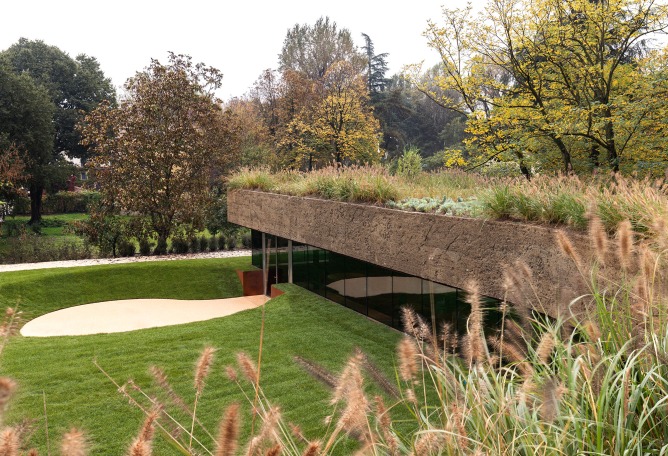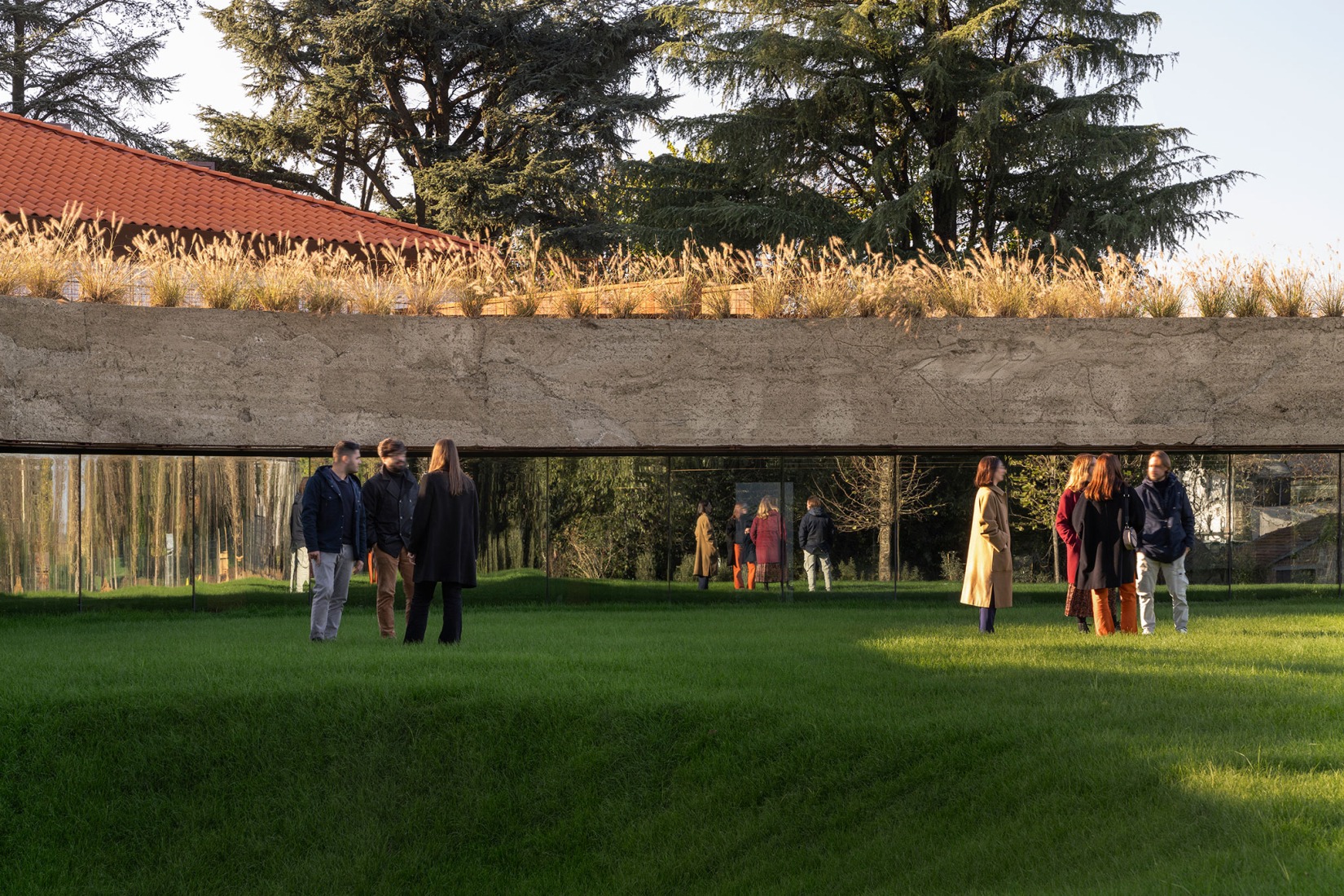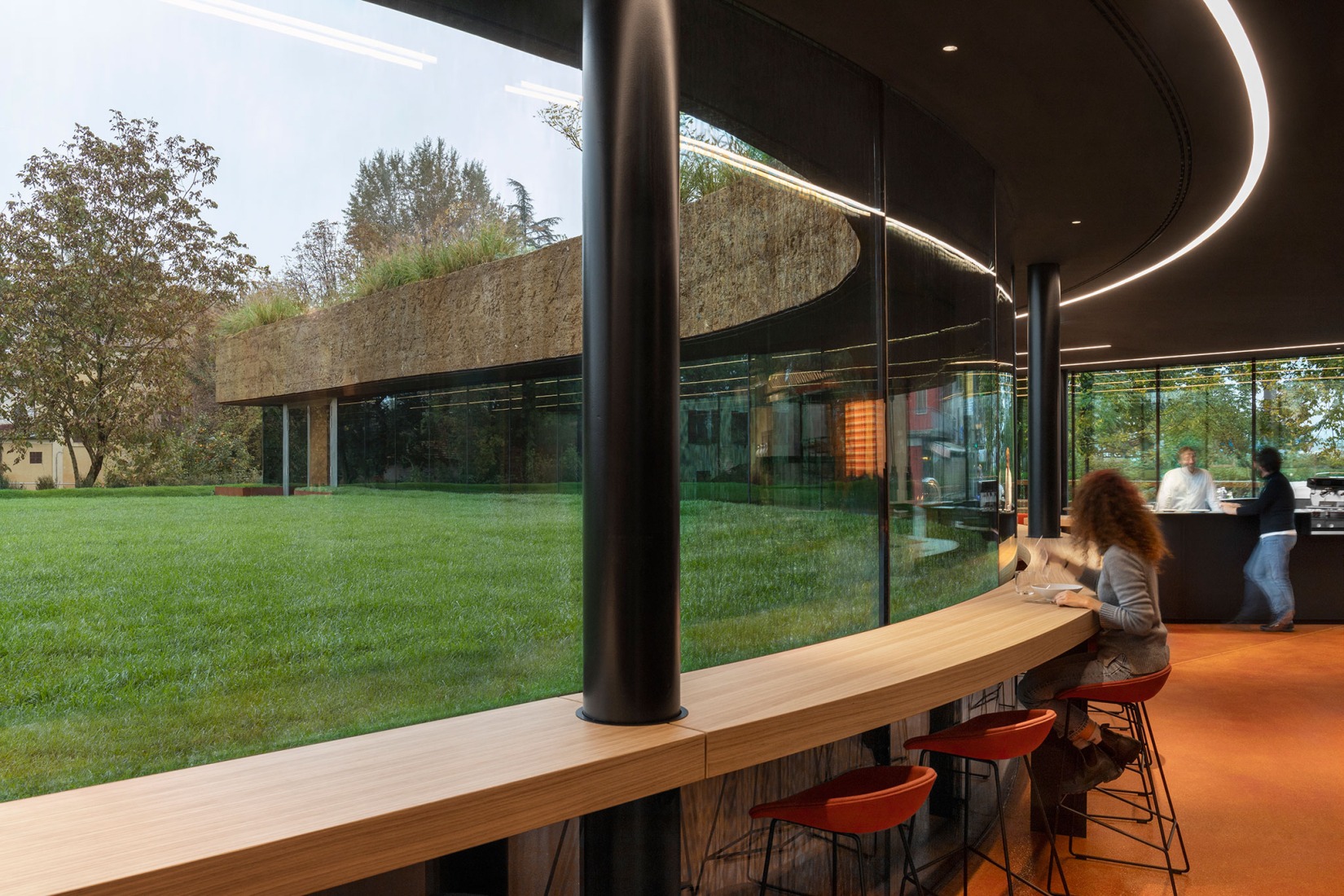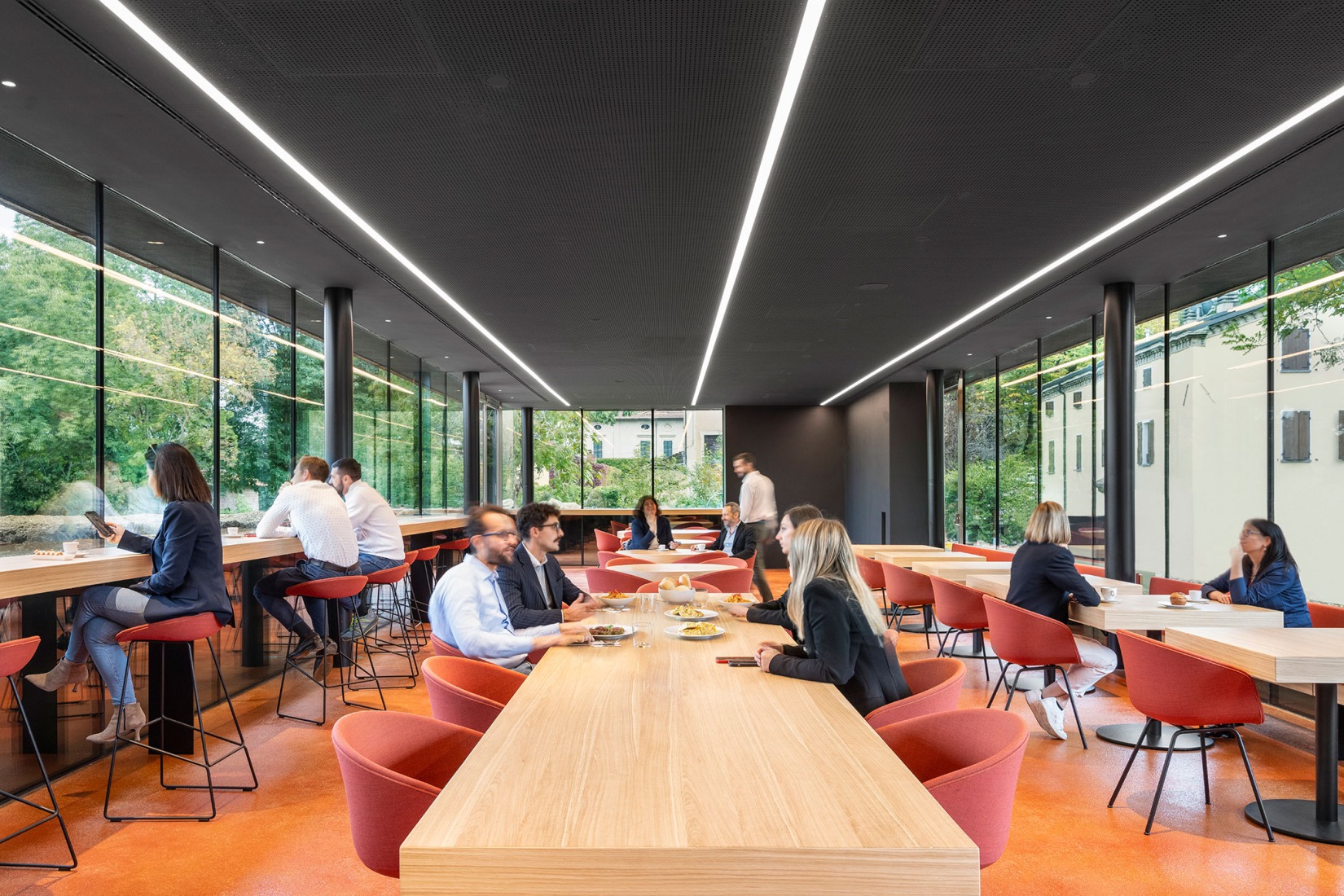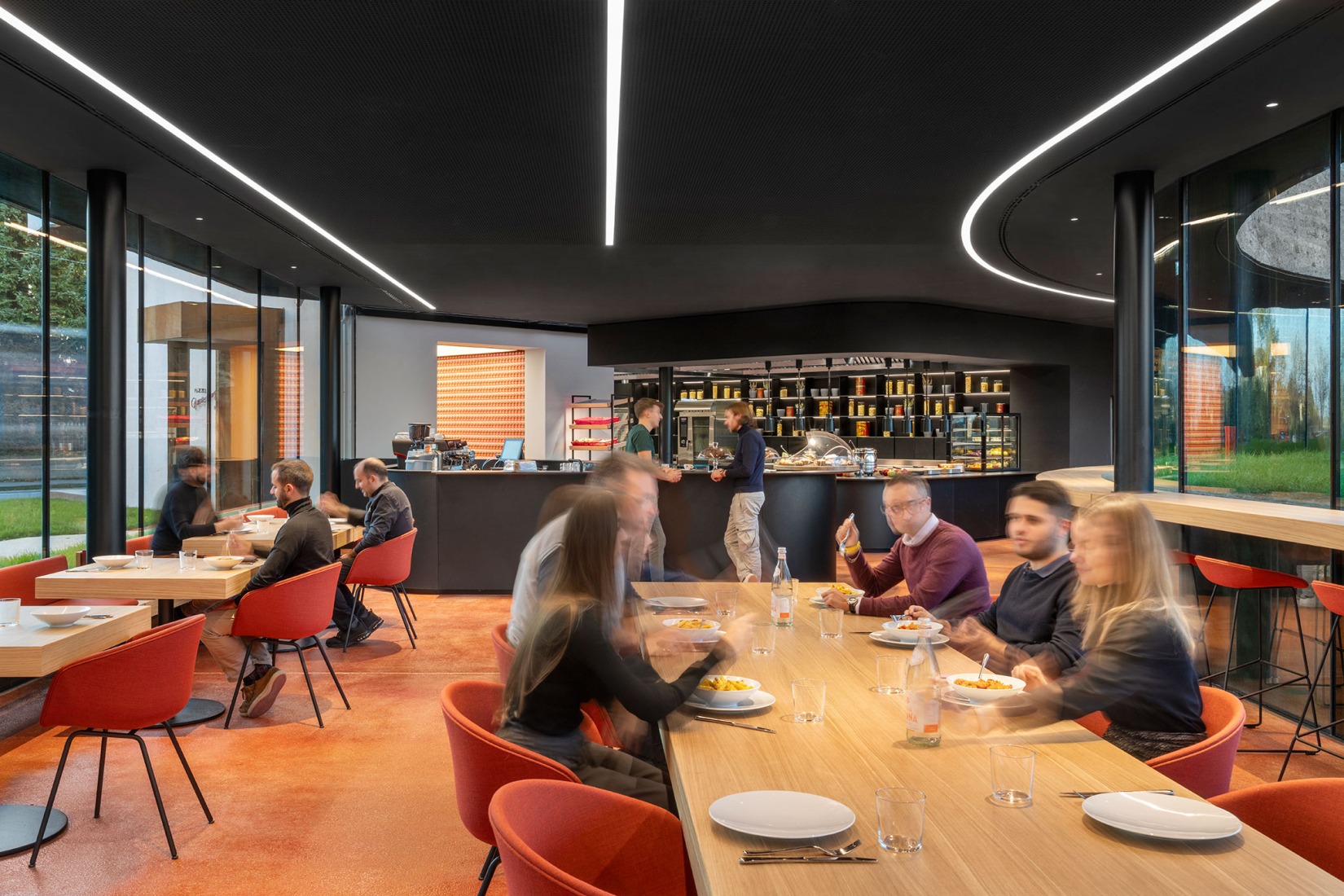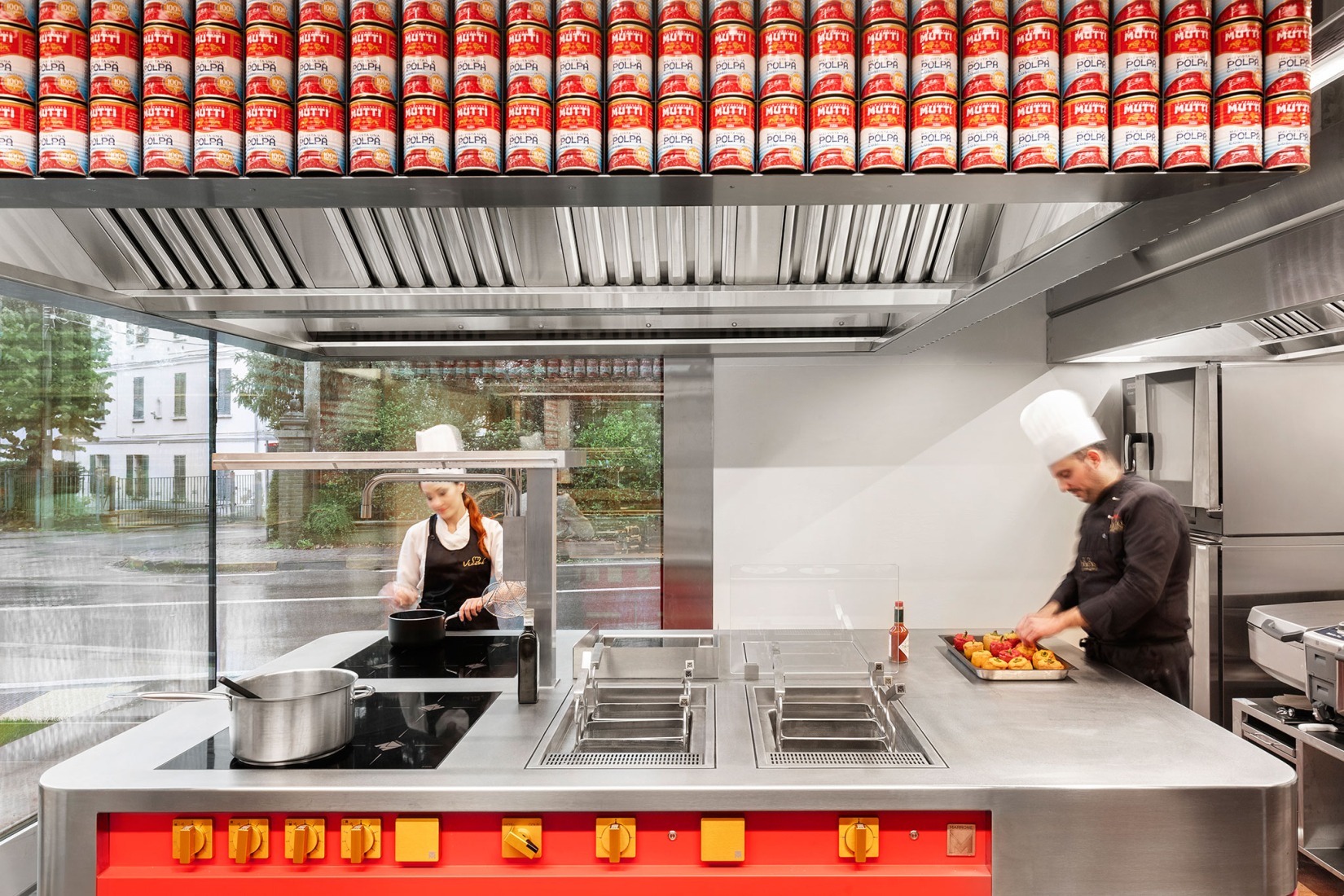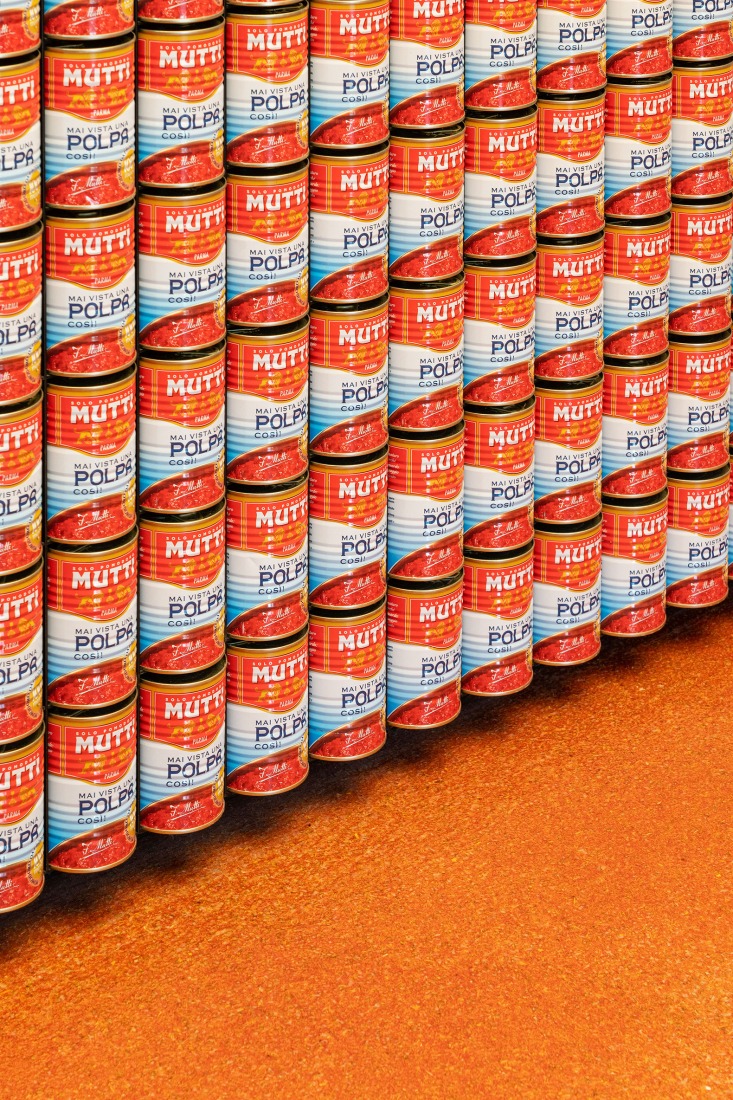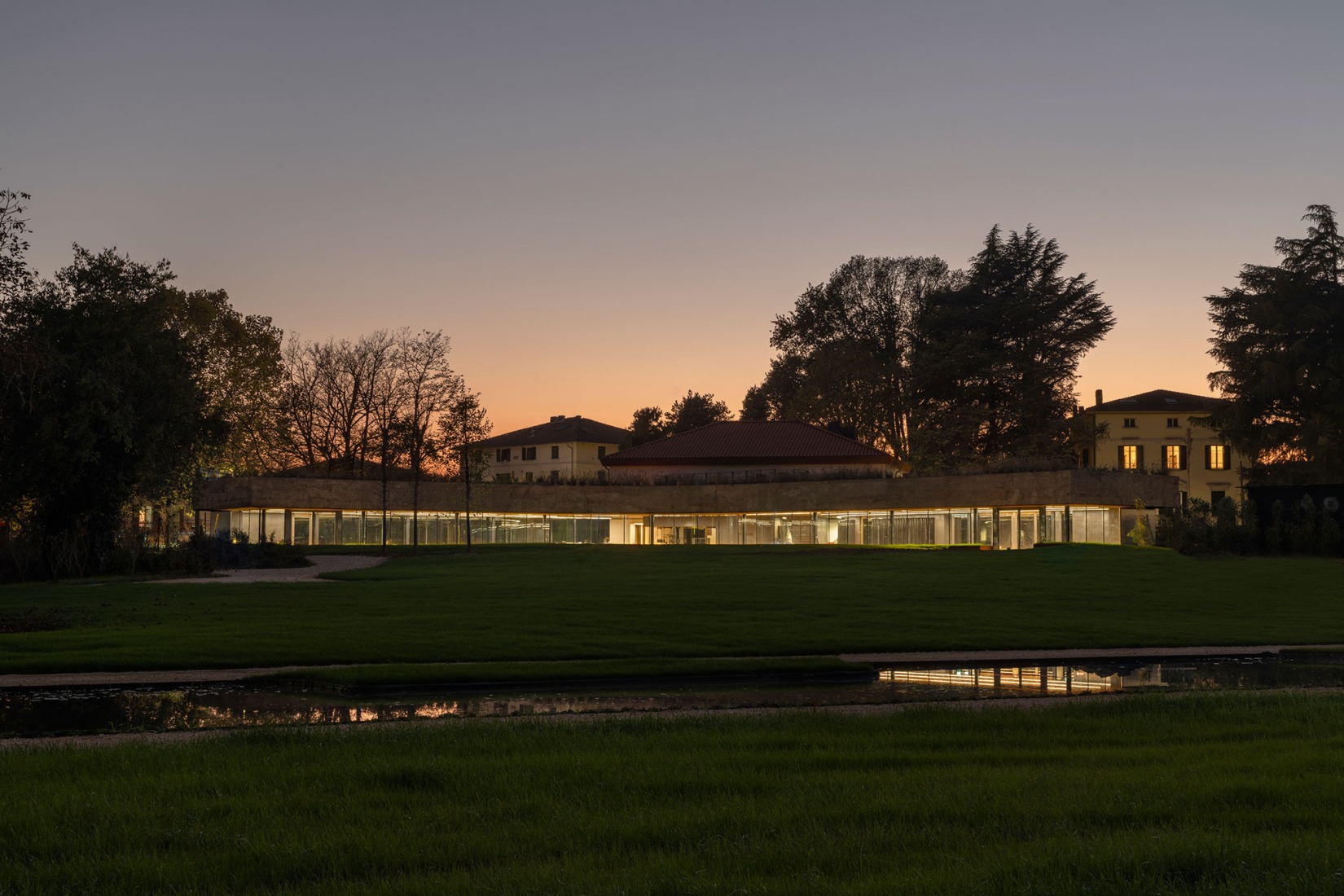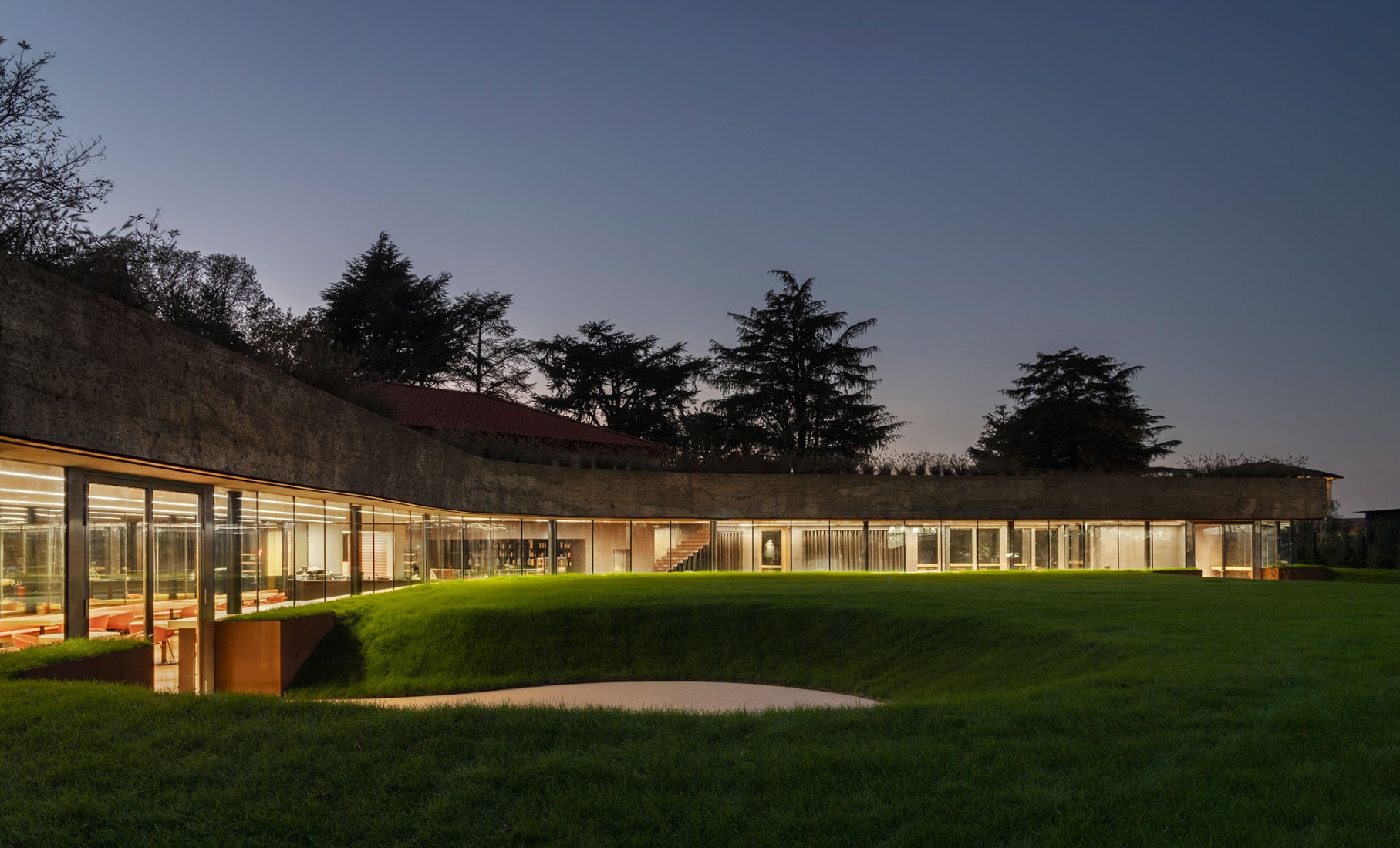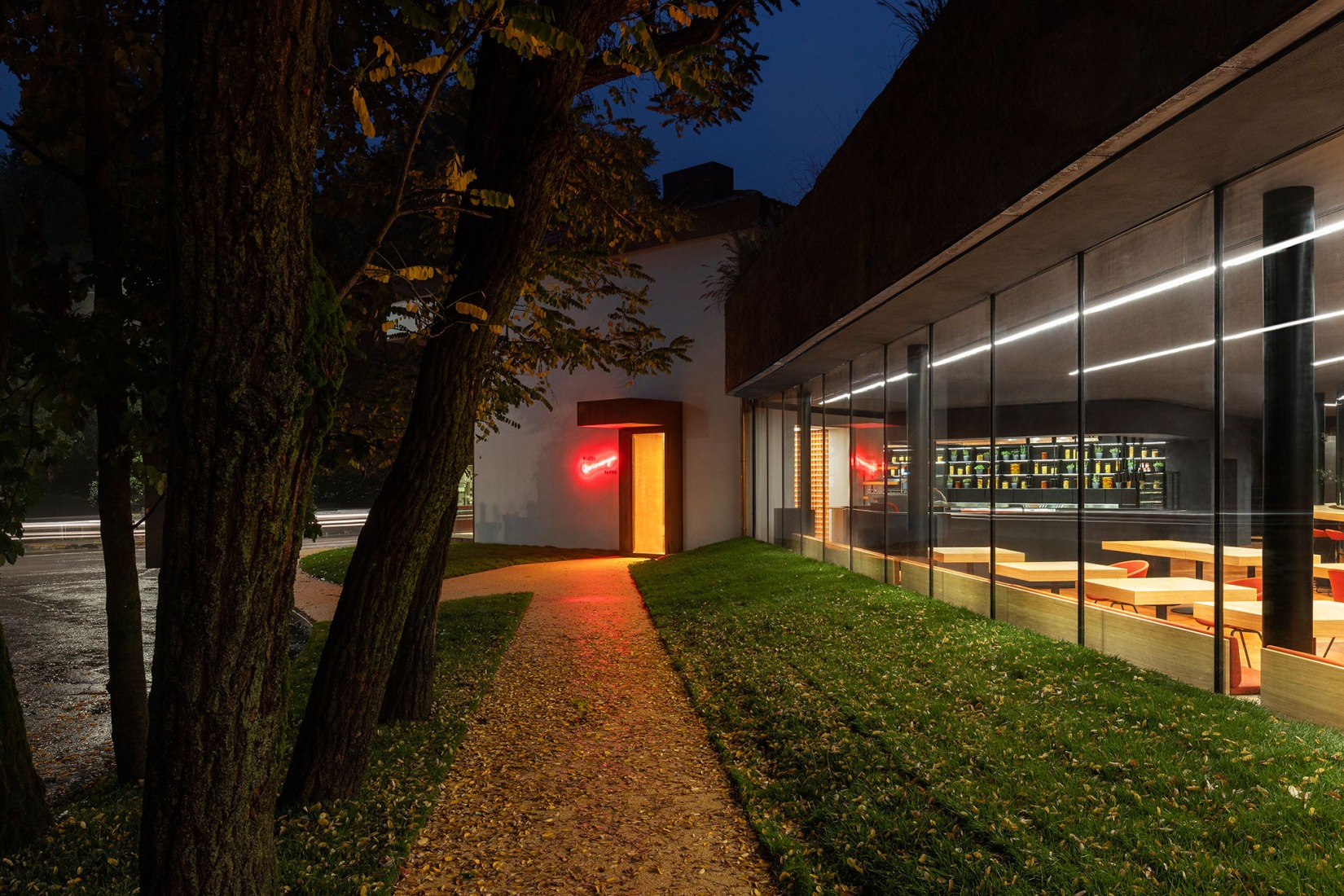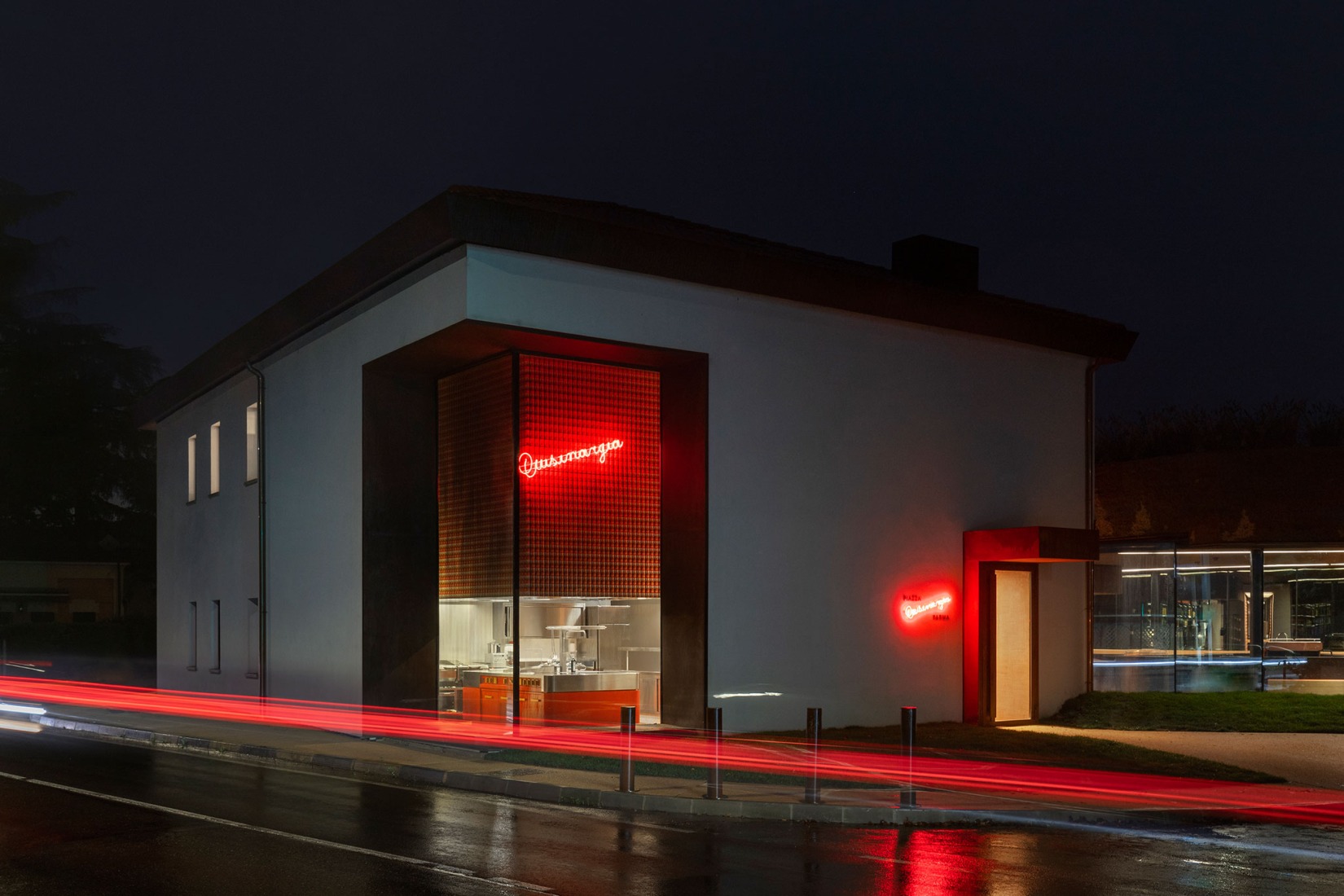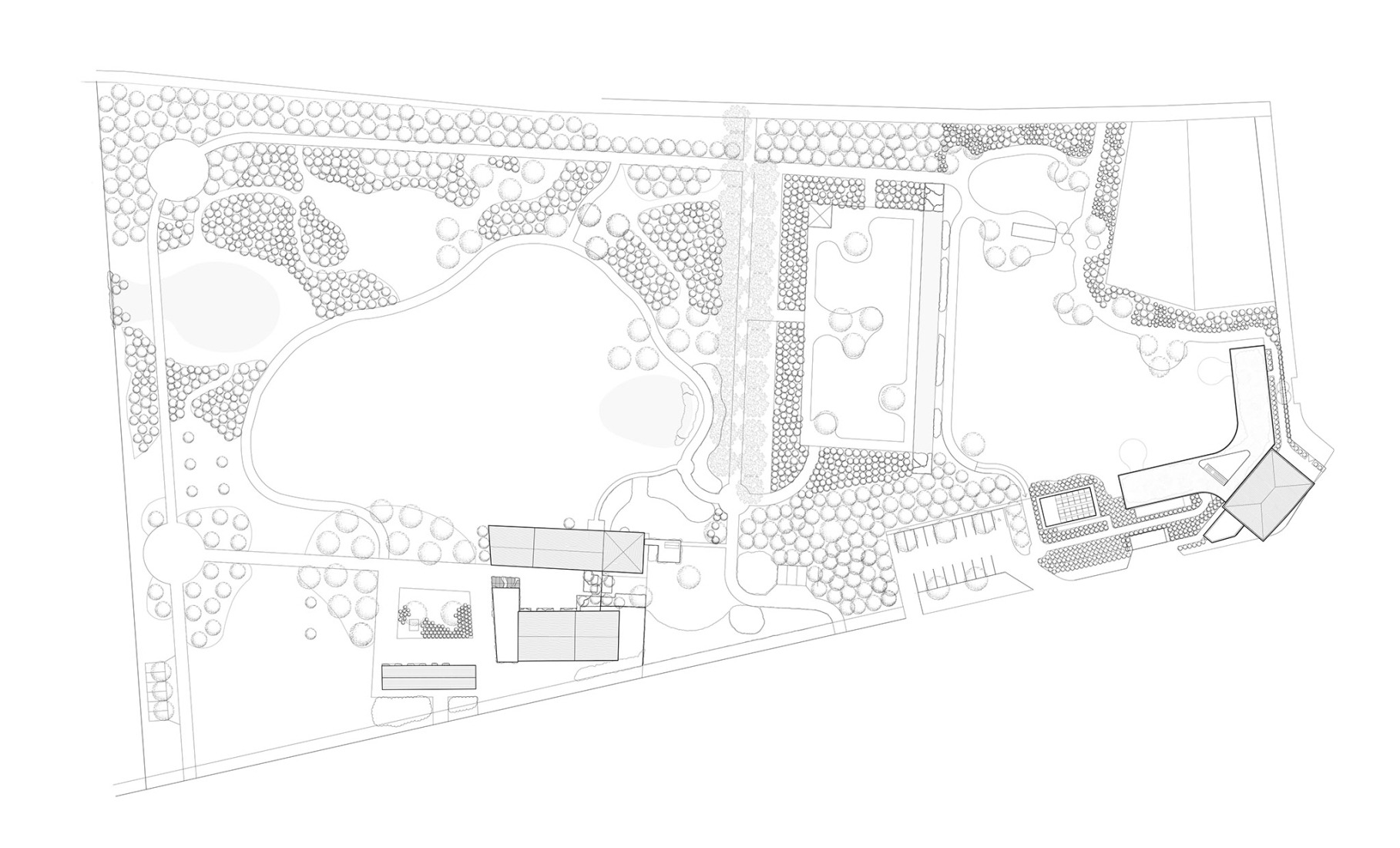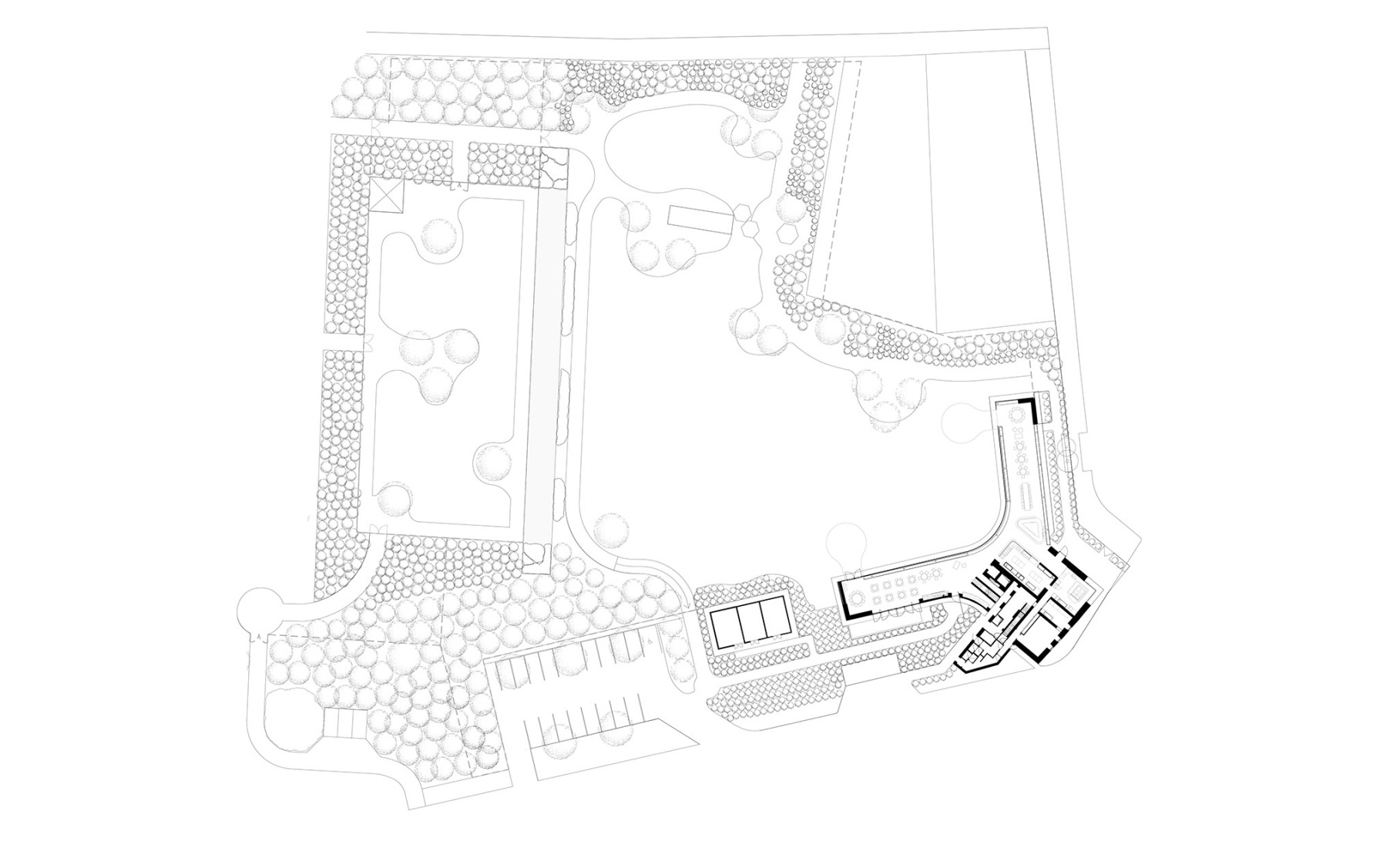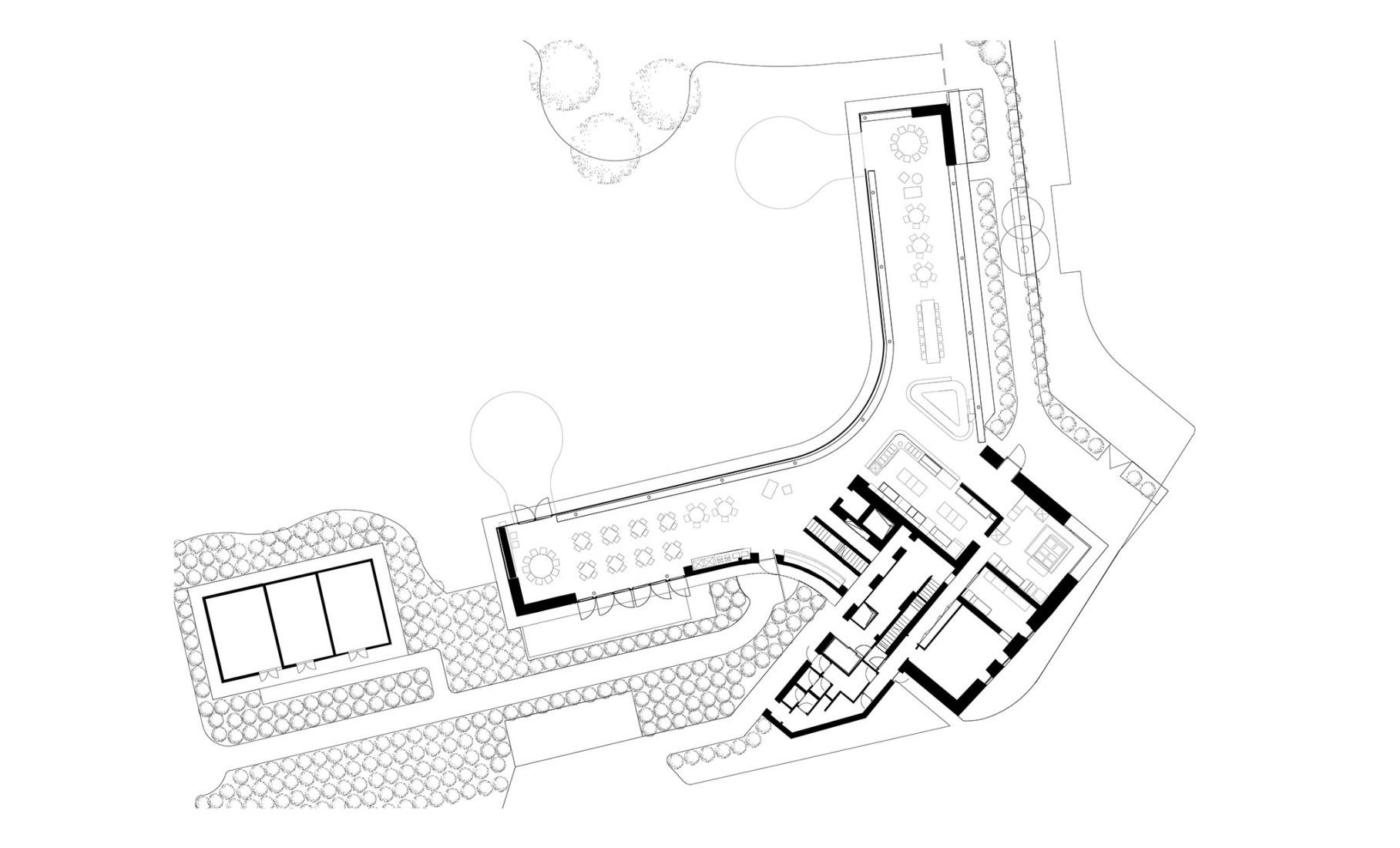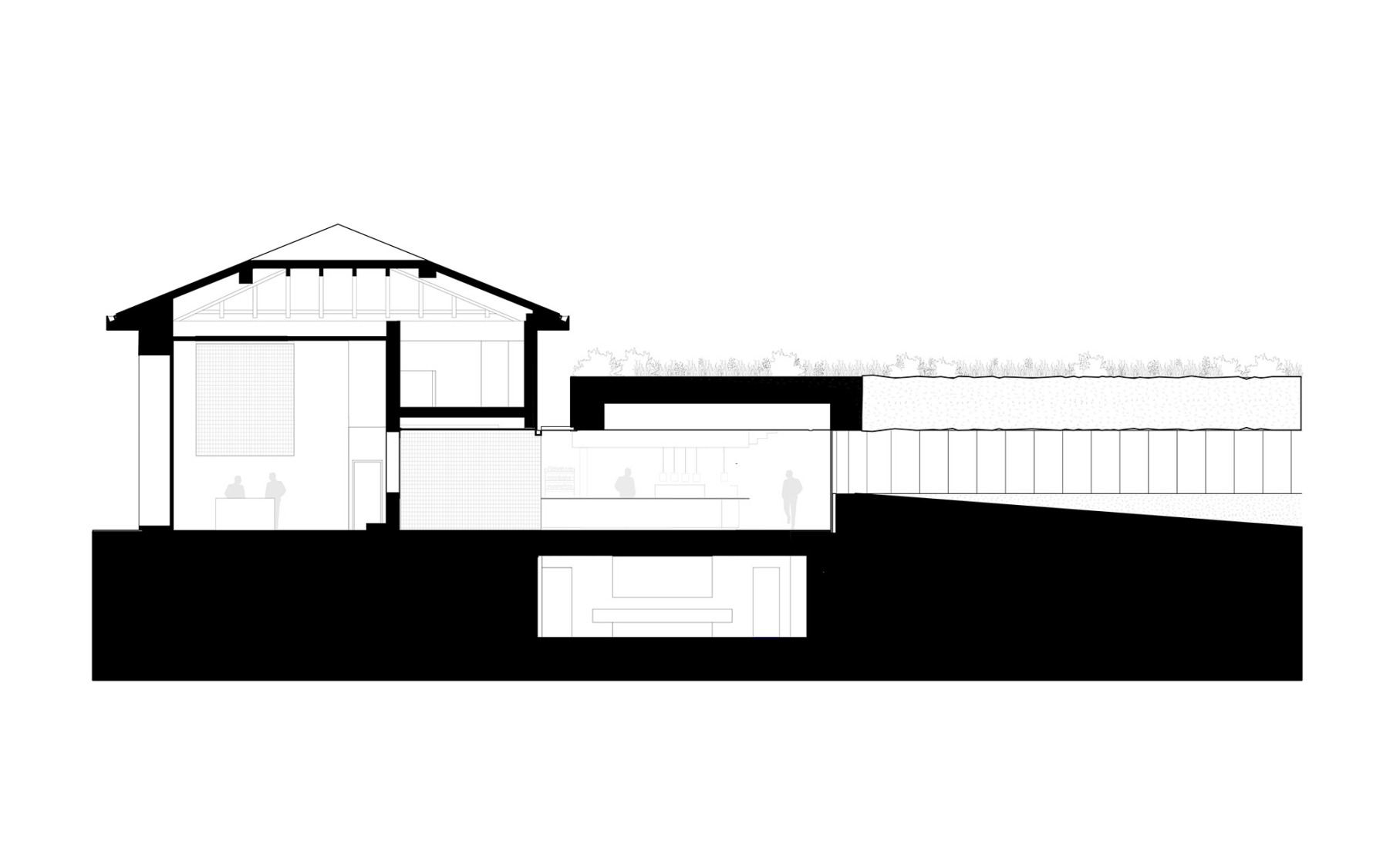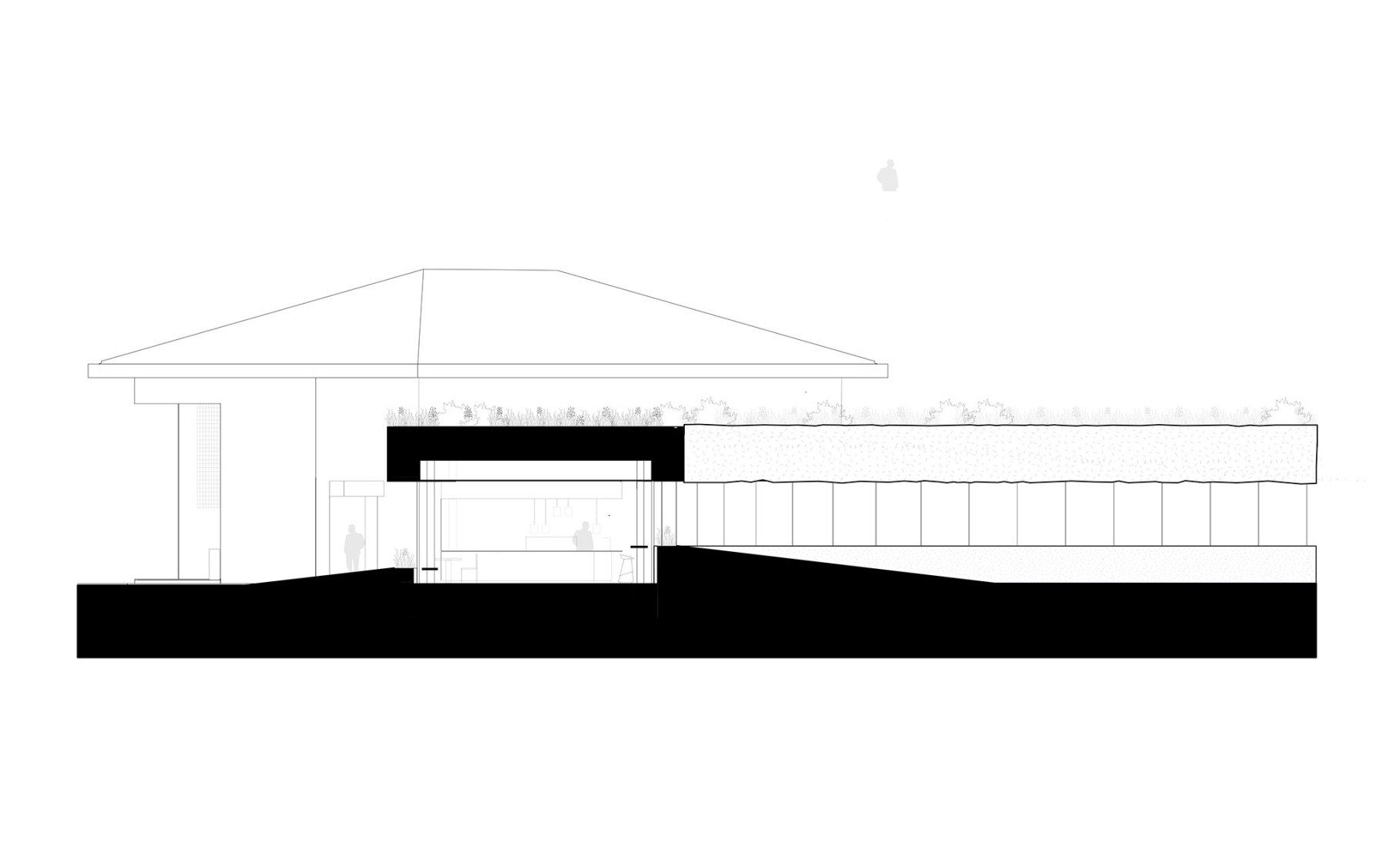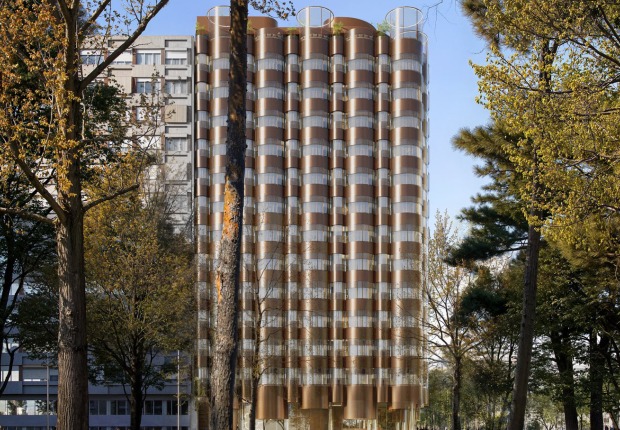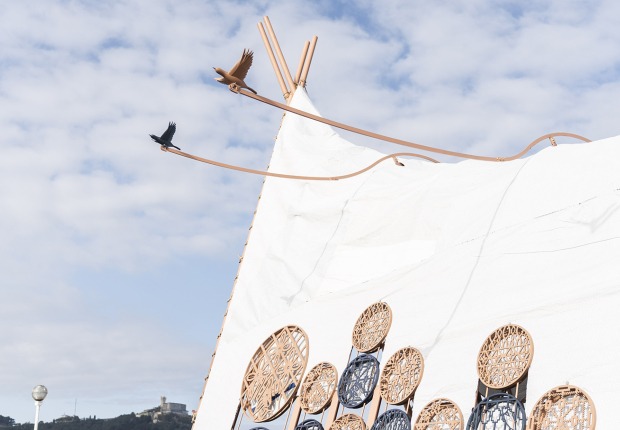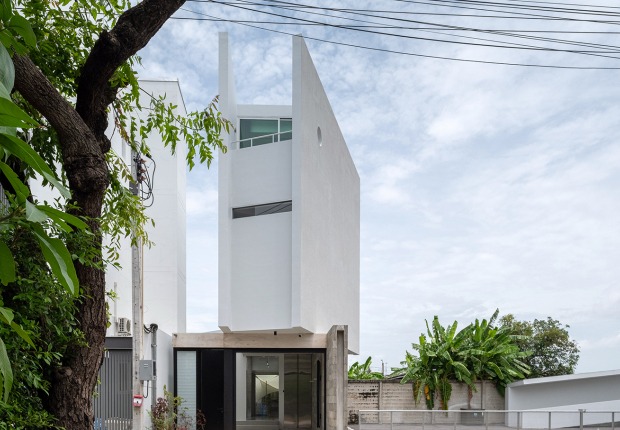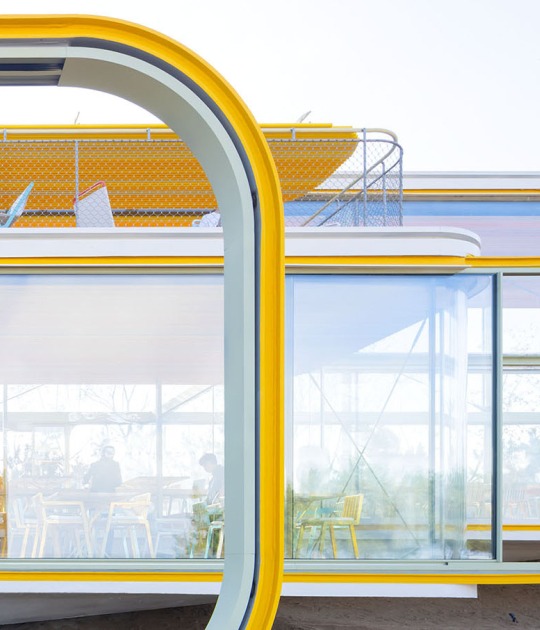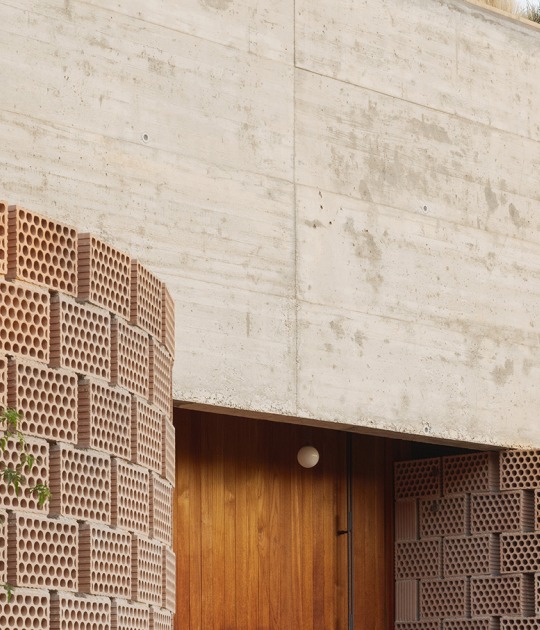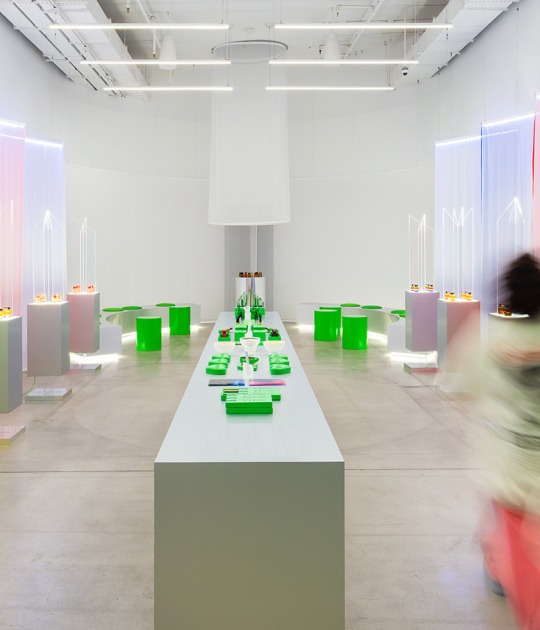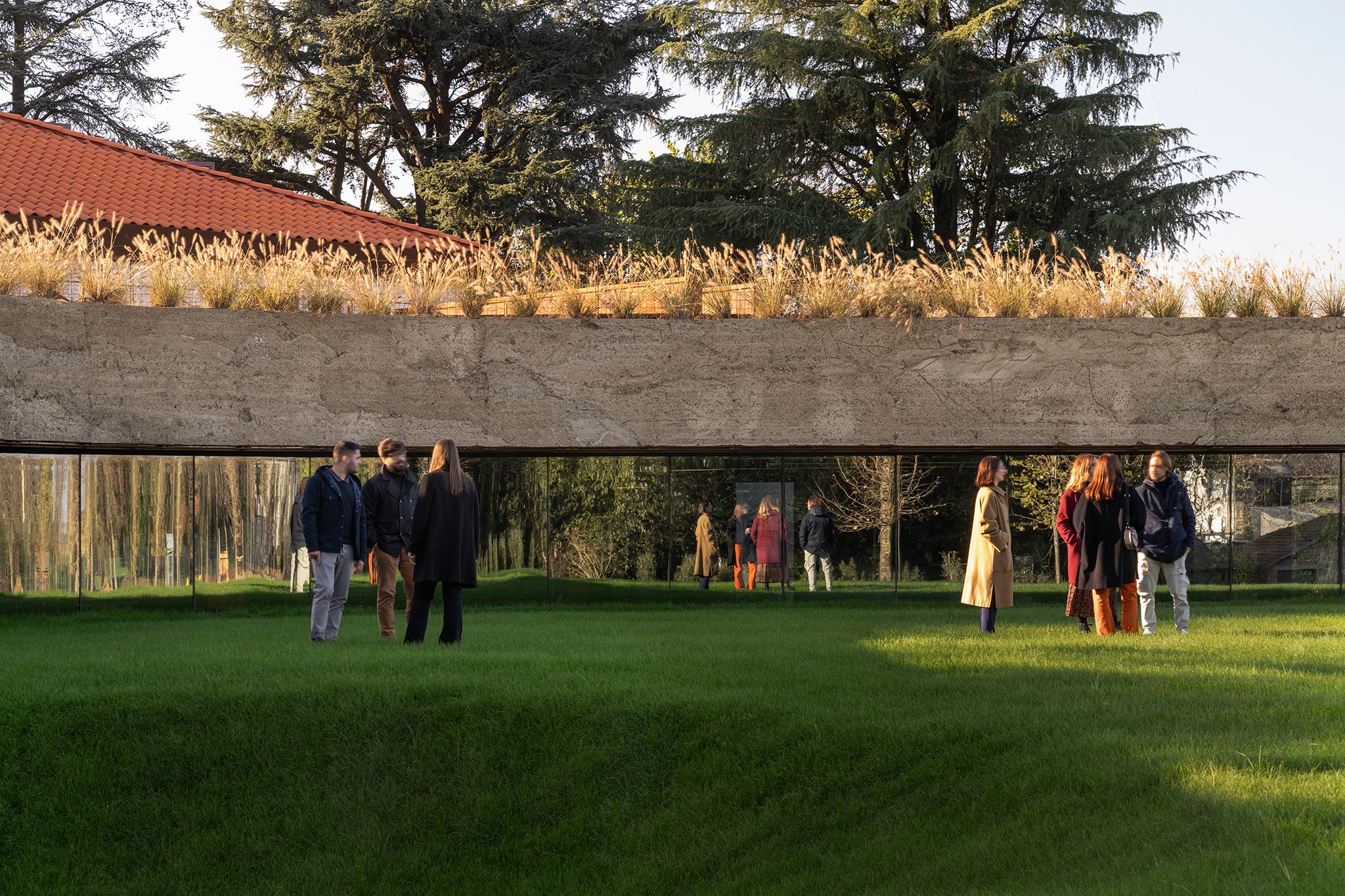
The new design by Carlo Ratti Associati is created by excavating a section of the land, rising 5 metres above the ground. The large dining room is crowned with a green roof of compacted earth that allows it to blend into the natural environment, merging the natural with the artificial.
The garden, created by Italian landscape architect Paolo Pejrone, is a reinterpretation of the 18th century French concept. It seeks to surprise the viewer, while preserving an uninterrupted view of the landscape, allowing the project and users to blend in with the surrounding vegetation.
The main dining room becomes a meeting place, where users can gather in a space overlooking the surrounding landscape. In addition to the new dining room, a renovated old tavern, visible from the road, serves as a kitchen.
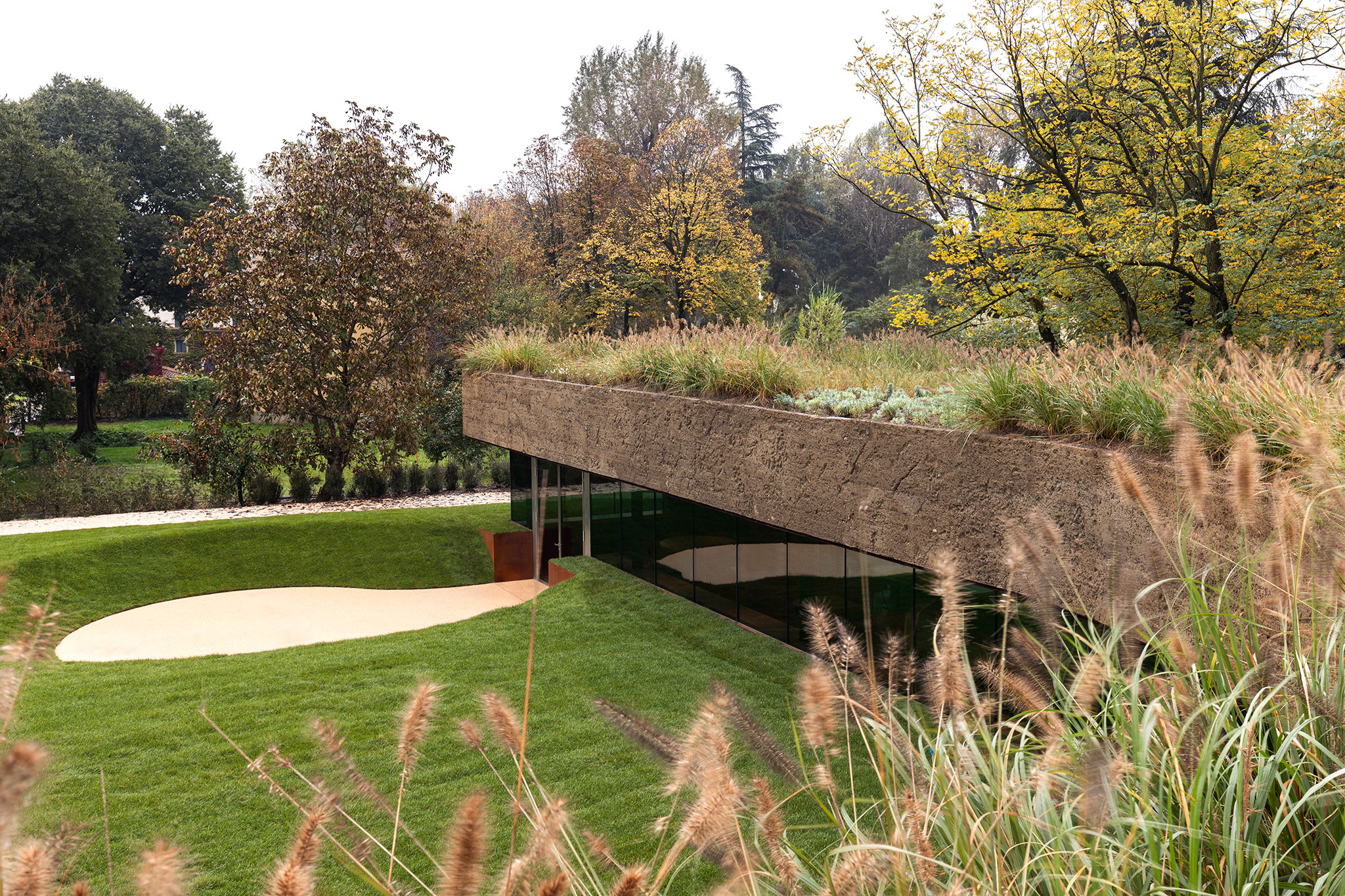
Michelin-Starred Canteen by CRA. Photograph by Melania Delle Grave, Agnese Bedini, DSL Studio.
Project description by Carlo Ratti Associati
International design and innovation firm CRA-Carlo Ratti Associati has completed the construction of Quisimangia (“Here we eat”), a new company Canteen for Mutti, a global leader in tomato-based products. The canteen, which will function as a restaurant by night, is located in Montechiarugolo (Parma), in the heart of Italy’s Food Valley. The structure was created by excavating a section of the site’s terrain and elevating it above ground level to integrate the space with its natural surroundings. This project marks a continuation of the partnership between CRA and Mutti, which began with the masterplan for a new factory and production site and was followed by “The Greenary,” a private residence that has become one of CRA’s most awarded buildings.
The new project features a dining hall crowned by a green roof made from compacted earth sourced directly from the site. Diners, seated in a recessed glass structure, are fully immersed in the surrounding vegetation, eating at the same level as the exterior meadow. The design evokes the image of a clod of earth lifted from the ground. The soil is elevated up to 5 meters above ground, covering an indoor area of almost 500 sq m (5,400 sq ft) for a total area of 1,200 sq m (13,000 sq ft).

Quisimangia will be managed by ViCook, the catering arm of brothers Chicco and Bobo Cerea, famed for their Michelin-starred Da Vittorio restaurants in Bergamo, St. Moritz, and Shanghai. It will be open to both Mutti employees and, in the near future, to the public. Adjacent to the new dining hall, an old tavern visible from the road has been renovated to serve as the canteen’s kitchen. The canteen will be an open space where people can meet in a friendly environment.
The gardens outside, a 1.1 hectare garden designed by Italian award-winning landscape architect Paolo Pejrone, showcase the bounty of the local region. The design reinterprets the 18th Century French concept of “ha-ha”, which means surprising the viewer by creating a vertical barrier while preserving an uninterrupted view of the landscape beyond from the other side, allowing guests to immerse themselves in nature.

“This project illustrates our quest to merge the natural with the artificial. This clod of earth rising from the ground creates a constant dialogue with nature. Instead of a ‘déjeuner sur l’herbe’ we could call it a ‘déjeuner sous l’herbe’, dining under the grass.”
Carlo Ratti, founding partner of CRA, professor at MIT, and curator of the Biennale Architettura 2025.
“We are pleased to continue our collaboration with CRA to bring this visionary project to life. The Mutti Canteen is much more than a dining hall; it is the finest expression of our commitment to quality and sustainability. Integrating the natural beauty of our surroundings with cutting-edge design, we are offering an environment where our employees can connect with both the land and each other in a meaningful way.”
Francesco Mutti, CEO of Mutti.

The principles of circularity are evident throughout the building’s design. The canteen also features a unique floor made from tomato skins—byproducts of Mutti’s production line. It is estimated that more than 3 tons of waste material were used to create this floor. The facility is equipped with advanced environmental control technologies to minimize energy consumption.
CRA’s designs emphasize the relationship between the natural and the artificial, pushing the boundaries of innovative construction materials. During Milan Design Week 2019, the “Circular Garden” installation explored the architectural potential of fungal root mycelium. In 2024, “sunRice” experimented with rice as an adaptable material. In 2020, CRA, in collaboration with Italo Rota, Matteo Gatto, and F&M Ingegneria, developed the “Italian Pavilion” for Expo 2020 Dubai, a living laboratory for advancing circularity in architecture, incorporating coffee grounds, recycled plastics, and algae into the structure. CRA’'s work on “The Greenary” and its collaboration with BIG on the “CapitaSpring” skyscraper in Singapore, which includes indoor public gardens, exemplifies their approach to integrating nature within artificial spaces.
